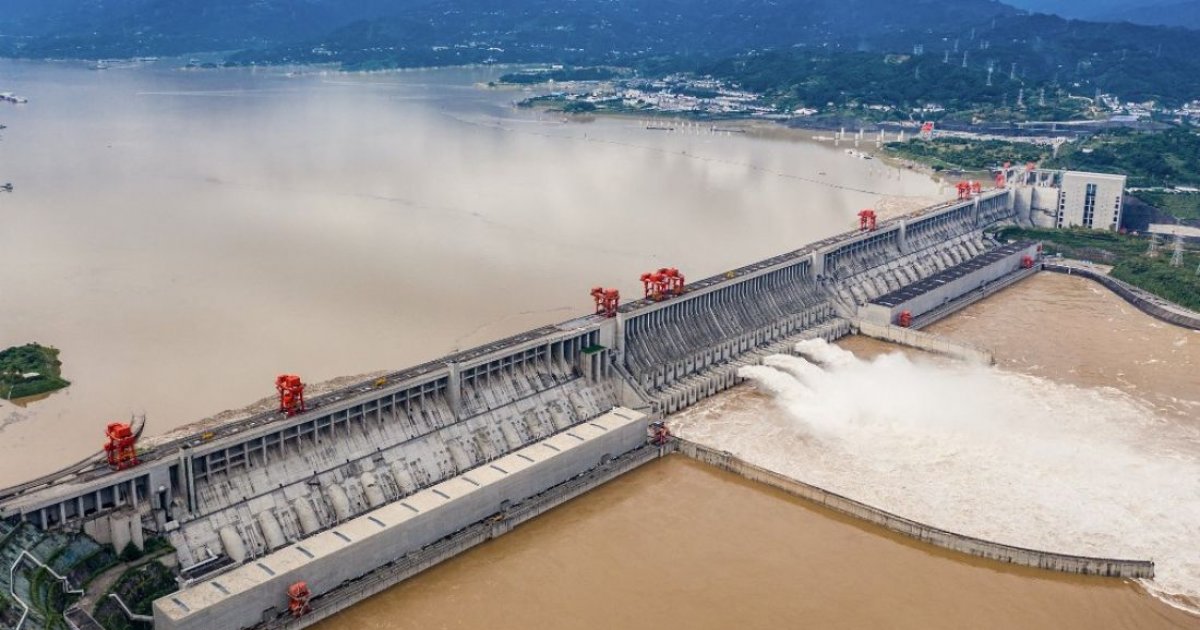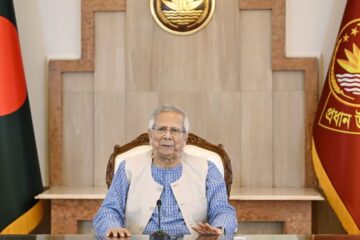On the banks of the Ganges River, near the iconic Farakka Barrage, the air is thick with anticipation. The 30-year Ganges Water-Sharing Treaty, signed in 1996 between India and Bangladesh, is set to expire in 2026. This treaty, which governs the volumetric sharing of the Ganges waters during the critical dry season, has been a testament to both cooperation and contention.
Now, with India’s recent unilateral suspension of the Indus Waters Treaty with Pakistan, a chilling precedent has been set, raising urgent questions about the future of transboundary water governance in South Asia. As climate change intensifies and populations grow, the need for a new paradigm — a South Asian rivers covenant– has never been more pressing.
Beyond volumetric division
In his essay Is a River Alive?, Robert Macfarlane invites us to reimagine rivers not as mere resources to be divided but as living entities with rights, histories, and agency. This philosophical shift is crucial for South Asia, where rivers like the Ganges, Indus, and Brahmaputra are woven into the cultural, spiritual, and economic fabric of the region. Yet, for decades, water-sharing agreements have reduced these vibrant lifelines to volumetric allocations, ignoring their ecological integrity and the interconnectedness of human and environmental well-being.
The Ganges Treaty, for instance, focuses solely on dividing water flow at the Farakka Barrage, with India permitted to withdraw up to 40,000 cusecs during the dry season. However, this approach has failed to address the river’s declining health or the cascading consequences for downstream communities.
In Bangladesh, arsenic contamination — triggered by over-reliance on groundwater due to reduced surface flow– has poisoned millions, described by the WHO as the “largest mass poisoning in history.” Meanwhile, the treaty’s lack of a basin-wide perspective excludes Nepal, an upper riparian, perpetuating a fragmented and unsustainable management model.
Lessons from the Indus
India’s recent suspension of the Indus Waters Treaty with Pakistan signals a dangerous turn toward the weaponization of shared ecology. The treaty, once hailed as a beacon of cooperation, is now under threat, with India invoking international law principles like “material breach” and “fundamental change of circumstances” to justify its actions. This move not only escalates geopolitical tensions but also sets an ominous precedent for other shared rivers, including the Ganges.
The weaponization of water is not new in South Asia. The Farakka Barrage, built in the 1960s to divert Ganges water to the Kolkata port, has long been a point of contention, disrupting natural silt deposition and exacerbating floods and droughts in Bangladesh. Similarly, China’s dam-building activities on the Brahmaputra River have raised concerns in India and Bangladesh, highlighting how upstream projects can leverage strategic advantage over downstream nations. In a region where 74% of the population faces high water stress, such actions threaten to ignite conflicts that transcend borders.
Climate change: The great amplifier
Climate change is transforming the hydrological landscape of South Asia, rendering existing treaties inadequate. The Himalayan glaciers, which feed the region’s major rivers, are projected to lose 10–30% of their mass by 2030, jeopardising water security for over 900 million people. Monsoon patterns are becoming increasingly erratic, with more intense rainfall and prolonged droughts, as seen in the devastating Pakistan floods of 2022.
A study published in Hydrology and Earth System Sciences warns that despite increased surface water availability due to monsoon shifts, soaring water demand driven by population growth and economic development will likely widen the South Asian water gap.
By 2050, the population in the Indus, Ganges, and Brahmaputra basins is expected to reach 1.1–1.4 billion, intensifying competition for dwindling resources. The Ganges Treaty, based on flow data from 1949–1988, is ill-equipped to handle these new realities, underscoring the need for adaptive, climate-resilient agreements.
Toward a South Asian rivers covenant
The renewal of the Ganges Treaty presents a historic opportunity to forge a South Asian rivers covenant — a regional pledge to honour rivers as living entities and prevent their weaponization. This covenant must be grounded in three core principles:
- Ecological integrity: Rivers must be managed as holistic ecosystems, not just sources of water. This includes maintaining environmental flows, restoring silt deposition processes, and addressing pollution. The planetary health framework, which recognizes the interconnectedness of human and environmental well-being, should guide this approach.
- Equitable benefit-sharing: Moving beyond volumetric allocation to shared benefits — such as hydropower, flood management, and irrigation — can create win-win outcomes. Nepal’s potential for hydropower generation, for instance, could benefit both India and Bangladesh if integrated into a basin-wide strategy.
- Climate resilience: Treaties must incorporate climate adaptability, with mechanisms for data sharing, joint flood forecasting, and adaptive water allocation. The Mekong River Commission’s model of real-time data exchange could serve as an inspiration.
Weaving culture into cooperation
South Asia’s literary traditions offer profound insights into the relationship between people and rivers. From Bengali poetry celebrating the barsha (rainy season) as a time of renewal to ancient texts venerating the Ganges as a goddess, rivers are deeply embedded in the cultural psyche. Harnessing these narratives can foster a sense of shared stewardship and mobilise public support for the covenant.
Similarly, inclusive governance that engages communities — particularly women and youth — is essential. The arsenic crisis in Bangladesh underscores how top-down policies often overlook ground realities, perpetuating inequities. A people-centred approach, drawing on indigenous knowledge and local practices, can ensure that the covenant is both just and effective.
A call to life
As negotiators from India and Bangladesh prepare to meet in Delhi later this year to discuss the Ganges Treaty renewal, the stakes could not be higher. Will they repeat the mistakes of the past, or will they seize this moment to pioneer a new era of cooperation?
In the words of Robert Macfarlane, “To recognize a river as alive is to recognize its capacity to act, to shape, and to be shaped.” Let South Asia’s rivers flow not as instruments of conflict but as threads of unity, binding nations in a shared covenant of life.
Zakir Kibria is a Bangladeshi writer, policy analyst and entrepreneur based in Kathmandu, Nepal. He can be reached at [email protected]



